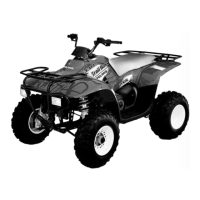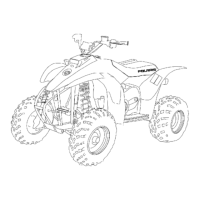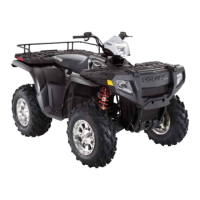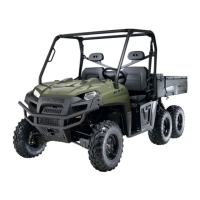ELECTRICAL
10.13
FLYWHEEL IDENTIFICATION
A
Flywheel Iden tificatio n Stamp Location
The flywheel can be identified by the stamp mark in location A. Refer to “I.D.” location in chart below. Do not
use the cast mark to determine flywheel application.
Engine Application
Type Cast Stamp Comment I.D. Stamp
ES32PFE N/A N/A N/A 210W N/A
330 -- DC/CDI IGNITION
The Trail Boss 330 has incorporated into it’s design a
DC/CDI ignition system.
Some of the advantages of DC ignition are:
GStronger, more consistent spark at low
rpm for better performance
GEasier starts
GSimpler component design for ease
trouble shooting and maintenance
Operation Overview:
The DC/CDI system relies on battery powe r for ignitio n.
Instead of generating DC voltage via magnetic
induction, a 12 volt DC current is supplied directly to the
CDI unit from the battery .
At the CDI, 12 volt DC current charges an internal
capacitortobuild up theinitialignitioncharge. A small
A/C signal from the Trigger (Pulse) coil closes a
thyristor (located in the CDI) at a point
pre--determinedin thecrankshaftrotationbymagnets
on the flywheel’s outer diameter. This signal releases
the electrical charge which saturates the coil for
ignition. DC/CDI systems have the ability to ignite
with as little as 6 volts of power .
Typical Timing Curve Shown
NOTE:
DC/CDI systems and compo-
nents are not interc hangeable
with any other system.
PartShark.com
877-999-5686

